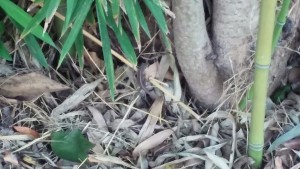Several weeks ago I saw a flock of Monk Parakeets foraging on the red fruit of a small tree and since then I have wondered what that tree was. This week I present the Pistacia texana.
This small evergreen is native to limestone cliffs and ravine walls of South Texas and Northern Mexico. It is very drought tolerant but requires well drained soil to prevent moisture build-up.

Pistacia texana is commonly called Texas Pistache or Pistachio but also goes by the names American or Mexican Pistachio (Pistacia mexicana).
The red fruit, described by some as nut-like, fully develop only if if the make tree is nearby. The female tree (pictured here) bears the fruit which is food for birds like the Monk Parakeets I saw several weeks ago.
References








